Solar System: 2016 Preview
Solar System: 2016 Preview
What do we have planned for 2016? A return to the king of planets. A survey of mysterious Ceres. More postcards from Pluto. Anyone who follows solar system exploration in 2016 is in for quite a ride. Last year was one for the record books – and now here are 10 things to look forward to in the new year. See also: what we have planned agency wide for 2016.
Juno Arrives at Jupiter

July 4, 2016 is arrival day for the Juno mission, the first sent expressly to study the largest planet in the solar system since our Galileo mission in the 1990s. Humans have been studying Jupiter for hundreds of years, yet many basic questions about the gas world remain: How did it form? What is its internal structure? Exactly how does it generate its vast magnetic field? What can it tell us about the formation of other planets inside and outside our solar system? Beginning in July, we’ll be a little closer to the answers.
OSIRIS-REx Takes Flight
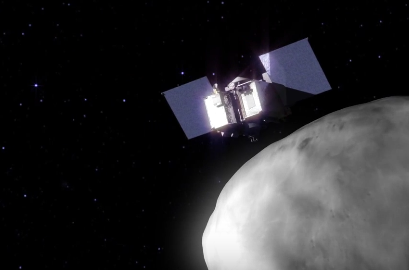
The OSIRIS-REx mission, short for Origins-Spectral Interpretation-Resource Identification-Security-Regolith Explorer, sets sail for an asteroid in September. The spacecraft will use a robotic arm to pluck samples from the asteroid Bennu to help better explain our solar system’s formation and even find clues to how life began.
Dawn Sees Ceres Up Close

After an odyssey of many years and millions of miles, in December the Dawn spacecraft entered its final, lowest mapping orbit around the dwarf planet Ceres. The intriguing world’s odd mountains, craters and salty deposits are ready for their close-ups. We can expect new images of the starkly beautiful surface for months.
Cassini Commences Its Grand Finale

In late 2016, the Cassini spacecraft will begin a daring set of orbits called the Grand Finale, which will be in some ways like a whole new mission. Beginning this year and extending into next, the spacecraft will repeatedly climb high above Saturn’s poles, flying just outside its narrow F ring 20 times. After a last targeted Titan flyby, the spacecraft will then dive between Saturn’s uppermost atmosphere and its innermost ring 22 times. As Cassini plunges past Saturn, the spacecraft will collect rich and valuable information far beyond the mission’s original plan.
New Horizons Sends More Postcards from Pluto

We have stared slack-jawed at the images and discoveries from last year’s Pluto flyby, but the fact is that most of the data that New Horizons collected remains on board the spacecraft. In 2016, we’ll see a steady release of new pictures — and very likely some expanded answers to longstanding questions.
Mars Missions March Forward
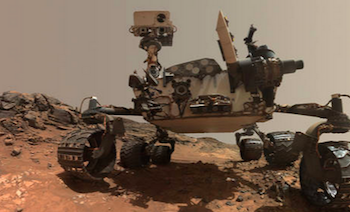
With five of our missions continuing their Martian quests, 2016 should be a good year for discoveries on the Red Planet.
Mars Odyssey
Mars Opportunity
Mars Reconnaissance Orbiter
Mars Curiosity
MAVEN
Mercury Transits the Sun

A transit is a very rare astronomical event in which a planet passes across the face of the sun. In May, Mercury will transit the sun, on of only thirteen Mercury transits each century on average.
LRO Keeps an Eagle Eye On the Moon

The Lunar Reconnaissance Orbiter (LRO) will extend its run in 2016, scanning the moon’s surface with its sharp-eyed instruments, investigating everything from lava tube skylights to changes at the Apollo landing sites.
Spacecraft Fly Under Many Flags

Our partner agencies around the world will be flying several new or continuing planetary missions to destinations across the solar system:
Akatsuki at Venus
ExoMars
Mars Express
Mars Orbiter Mission
Rosetta at Comet 67/P
Technology Demonstration Missions Push the Envelope
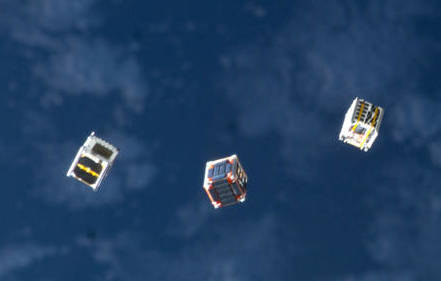
We’re always looking for new frontiers on distant worlds, as well as the technology that will take us there. This year, several missions are planned to take new ideas for a spin in space:
Deep Space Atomic Clock
NODES
LDSD
Make sure to follow us on Tumblr for your regular dose of space: http://nasa.tumblr.com
More Posts from Intergalacticnerd and Others

M104, the Sombrero Galaxy
Credit: Jimmy Walker
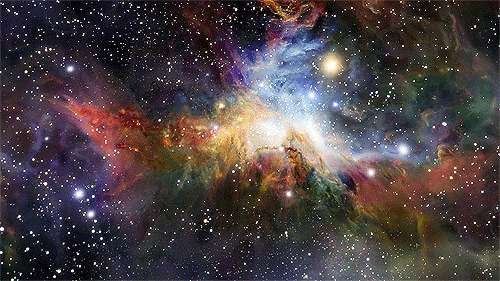
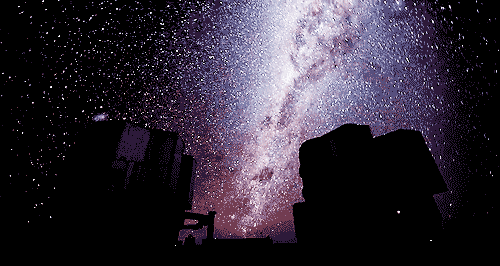
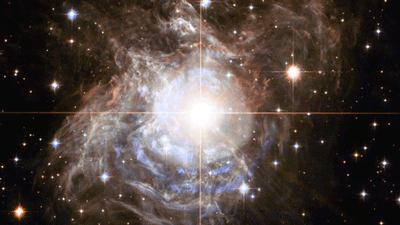
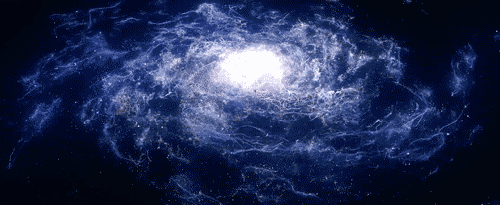
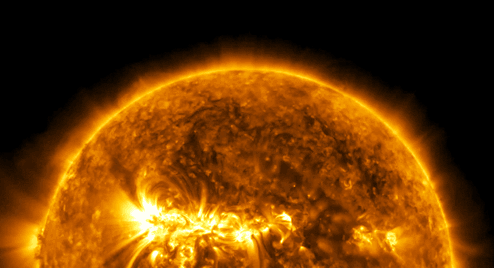
“Every one of us is, in the cosmic perspective, precious. If a human disagrees with you, let them live. In a hundred billion galaxies, you will not find another.” ~ Carl Sagan, Cosmos

Pluto’s heart
This high-resolution image captured by NASA’s New Horizons spacecraft shows the bright expanse of the western lobe of Pluto’s “heart,” or Sputnik Planitia, which is rich in nitrogen, carbon monoxide and methane ices.
Credit: NASA/JHUAPL/SwRI
@nasa release the aliens
Colors of Earth
When we think of our globe from a distance, we generally visualize two colors: blue and green. Water and land. Mostly water, consequently, our planet’s nickname of the blue marble.
Traveling around the globe every 90 minutes covering millions of miles with a focused lens on our beautiful planet from 250 miles above, I’ve captured many beautiful colors beyond blue and green that showcase Earth in new and interesting ways. Some colors are indicative of nature like desert sands and weather like snow. Other colors tell stories of Earth’s climate in bright splashes of yellows and greens of pollen and muted grey tones and clouded filters of pollution.
Blue and green still remain vivid and beautiful colors on Earth from the vantage point of the International Space Station, but here are some other colors that have caught my eye from my orbital perspective.

African violet

Bahamas blues

Tropical in Africa

Yellow desert

Orange in Egypt

Red surprise

Snow white
Follow my Year In Space on Twitter, Facebook and Instagram!




This is the coolest outer space animation ever. It shows the Crab Supernova explosion, happened in 1054, and its evolution into the remnant it is now - called the Crab Nebula. Basically a thousand years speeded up into less than a minute.
Modern understanding that the Crab Nebula was created by a supernova, an explosion of a massive supergiant star, dates to 1921 when Carl Otto Lampland announced he had seen changes in its structure. This eventually led to the conclusion that the creation of the Crab Nebula corresponds to the bright SN 1054 supernova recorded by Chinese astronomers in AD 1054. There is also a 13th-century Japanese reference to an appearance of a new or “guest” star in Meigetsuki. It was then so bright it was visible during the daytime for 23 days.
animation credit: ESA/Hubble (M. Kornmesser & L. L. Christensen)

For the first time, astronomers have observed bursts of visible light being released by a black hole as it swallows matter from nearby stars.
These flashes of light, which lasted between several minutes to a few hours, were seen coming from a black hole in the Cygnus constellation, located about 7,800 light-years away from Earth. Incredibly, some of the flashes were so bright, the team says amateur astronomers could see them with a modest 20-cm telescope.
“We find that activity in the vicinity of a black hole can be observed in optical light at low luminosity for the first time,” astronomer and lead researcher, Mariko Kimura from Kyoto University in Japan, told Charles Q. Choi at Space.com.
“These findings suggest that we can study physical phenomena that occur in the vicinity of the black hole using moderate optical telescopes without high-spec X-ray or gamma-ray telescopes.”
Continue Reading.

Infant Star’s Artistic Outburst
The artistic outburst of an extremely young star, in the earliest phase of formation, is captured in this spectacular image from the NASA/ESA Hubble Space Telescope. The colourful wisps, found in the lower left of the image, are painted onto the sky by a young star cocooned in the partially illuminated cloud of obscuring dust seen to the upper right.
Pictured punching through the enshrouding dust is an extremely hot, blue jet of gas released by the young star. As this jet speeds through space, it collides with cooler surrounding material. The result is the colourful object to the lower left, produced as the cooler material is heated by the jet (opo9524a, potw1307a).
This wispy object is known as HH34 and it is an example of a Herbig–Haro (HH) object. It resides approximately 1400 light-years away near the Orion Nebula, a large star formation region within the Milky Way. HH objects exist for a cosmically brief time — typically thousands of years — with changes seen in observations taken only a few years apart (heic1113).
Credit: ESA/Hubble & NASA



Gravitational lensing
“Spacetime tells matter how to move; matter tells spacetime how to curve”: when spacetime is distorted by very massive objects, it can create a lensing effect, distorting light coming from the source. Here are some images capturing this effect.
All images from NASA/ESA & Hubble






Interstellar 2014
-
 lakesidebear liked this · 6 years ago
lakesidebear liked this · 6 years ago -
 poetcc-things liked this · 8 years ago
poetcc-things liked this · 8 years ago -
 thisisacatperson liked this · 8 years ago
thisisacatperson liked this · 8 years ago -
 lemonlimekodkod liked this · 9 years ago
lemonlimekodkod liked this · 9 years ago -
 lurking--shadows liked this · 9 years ago
lurking--shadows liked this · 9 years ago -
 parkrrpeter-blog reblogged this · 9 years ago
parkrrpeter-blog reblogged this · 9 years ago -
 angusarcher reblogged this · 9 years ago
angusarcher reblogged this · 9 years ago -
 smg1ne liked this · 9 years ago
smg1ne liked this · 9 years ago -
 voren reblogged this · 9 years ago
voren reblogged this · 9 years ago -
 ultrainfinitequest liked this · 9 years ago
ultrainfinitequest liked this · 9 years ago -
 big-blue-world liked this · 9 years ago
big-blue-world liked this · 9 years ago -
 secretagentpeptidebond reblogged this · 9 years ago
secretagentpeptidebond reblogged this · 9 years ago -
 heyitssnickers liked this · 9 years ago
heyitssnickers liked this · 9 years ago -
 crimsonfirebolt reblogged this · 9 years ago
crimsonfirebolt reblogged this · 9 years ago -
 the-evermind liked this · 9 years ago
the-evermind liked this · 9 years ago -
 swoz reblogged this · 9 years ago
swoz reblogged this · 9 years ago -
 youwontcatchmealive reblogged this · 9 years ago
youwontcatchmealive reblogged this · 9 years ago -
 chasingtheskies reblogged this · 9 years ago
chasingtheskies reblogged this · 9 years ago -
 ookiki reblogged this · 9 years ago
ookiki reblogged this · 9 years ago -
 vkgyarukei reblogged this · 9 years ago
vkgyarukei reblogged this · 9 years ago -
 vkgyarukei liked this · 9 years ago
vkgyarukei liked this · 9 years ago -
 ooobvsydu liked this · 9 years ago
ooobvsydu liked this · 9 years ago -
 veechuu reblogged this · 9 years ago
veechuu reblogged this · 9 years ago -
 veechuu liked this · 9 years ago
veechuu liked this · 9 years ago -
 actiaslunaris reblogged this · 9 years ago
actiaslunaris reblogged this · 9 years ago -
 belldilla reblogged this · 9 years ago
belldilla reblogged this · 9 years ago -
 belldilla liked this · 9 years ago
belldilla liked this · 9 years ago -
 megaradcollectionwolfthings-blog liked this · 9 years ago
megaradcollectionwolfthings-blog liked this · 9 years ago -
 ofirablack liked this · 9 years ago
ofirablack liked this · 9 years ago -
 inconstantsearchofperfection liked this · 9 years ago
inconstantsearchofperfection liked this · 9 years ago -
 msfizicks reblogged this · 9 years ago
msfizicks reblogged this · 9 years ago -
 jackalope-wishes liked this · 9 years ago
jackalope-wishes liked this · 9 years ago -
 reallymadscientist reblogged this · 9 years ago
reallymadscientist reblogged this · 9 years ago -
 feeshrfriendz liked this · 9 years ago
feeshrfriendz liked this · 9 years ago -
 tendersushi liked this · 9 years ago
tendersushi liked this · 9 years ago -
 analgesicsleep reblogged this · 9 years ago
analgesicsleep reblogged this · 9 years ago -
 potterness liked this · 9 years ago
potterness liked this · 9 years ago -
 rainyphoenix22 reblogged this · 9 years ago
rainyphoenix22 reblogged this · 9 years ago -
 ofbooksandcleverness reblogged this · 9 years ago
ofbooksandcleverness reblogged this · 9 years ago -
 mossy-bean liked this · 9 years ago
mossy-bean liked this · 9 years ago -
 manimal08-blog reblogged this · 9 years ago
manimal08-blog reblogged this · 9 years ago
"Astronomy compels the soul to look upwards and leads us from this world to another." - Plato
147 posts